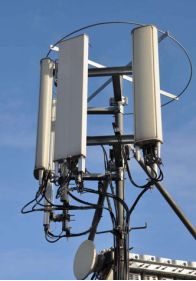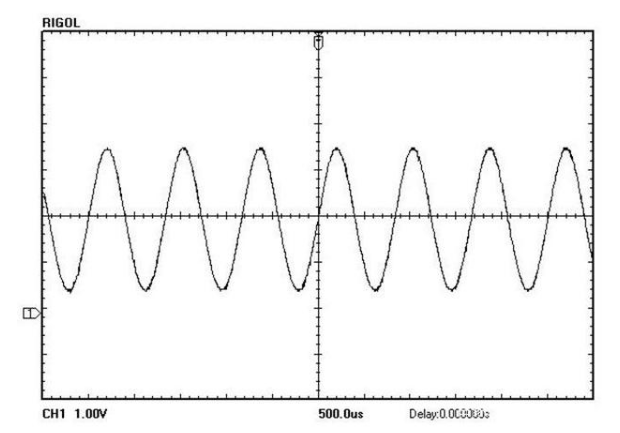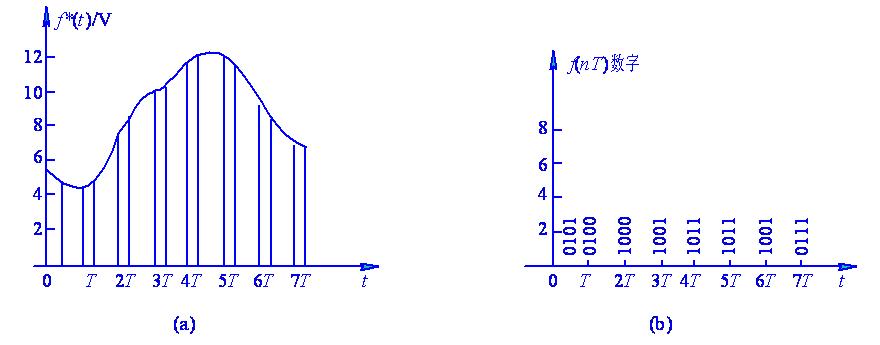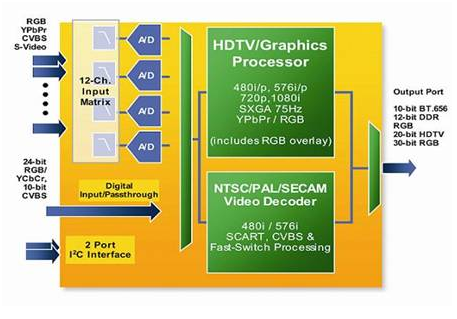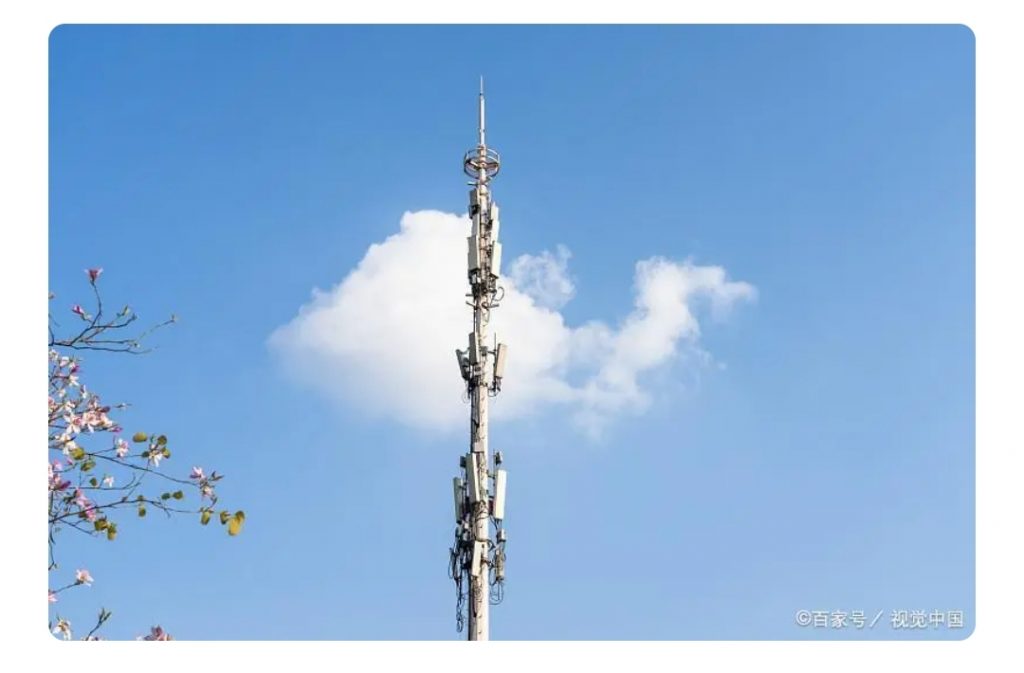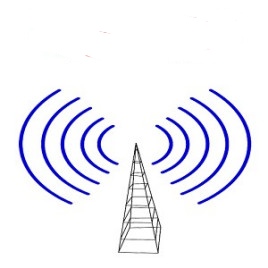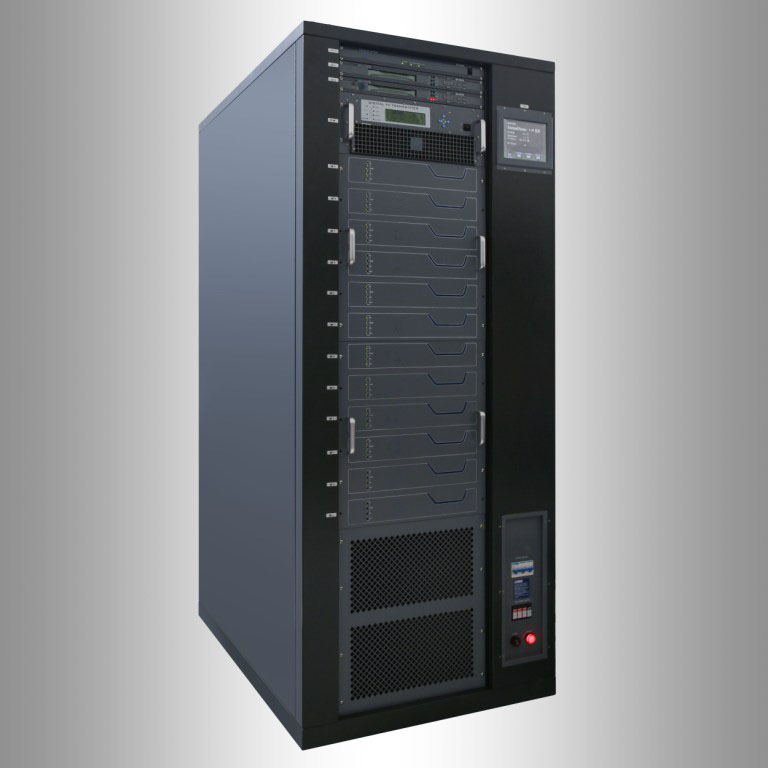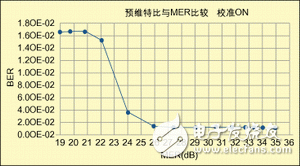With the development of radio and television technology and the update of radio and television equipment, a series of tremendous changes have taken place in the television field, and new technologies and systems such as conference television, VCD, DVD, digital television, and high-definition television (HDTV) are rapidly disappearing. into our lives. Compared with traditional analog TV, the outstanding feature of these new systems is the use of all-digital image/sound processing technology. For different application fields, a series of corresponding digital video and audio coding standards have been rapidly formulated and continuously improved, including: H.261 for conference TV and videophone, JPEG for still image compression, MPEG-1 for VCD, MPEG-2 for broadcast TV, DVD and HDTV, MPEG-4 for Internet TV, etc. At the same time, digital studio standards and digital TV quality evaluation standards have also been formulated.
the
Digital Television
Digital TV can be explained from the perspective of program content, technology and users. Explained from the perspective of user viewing, the programs that users watch with IRD or digital TV receiver (DVB interface) are digital TV programs in the true sense; according to the source of program content, digital TV programs can be TV programs or movies ; Explained from a technical point of view, digital TV programs can be films and TVs that are filmed, produced, stored, broadcast and transmitted digitally, or films and TVs that have been digitally processed from previously stocked material pieces.
the
digital television transmission
Digital TV programs can be transmitted to the user’s receiving end in different media and using different technologies. The transmission methods of digital TV mainly include satellite, terrestrial launch, HFC network, SDH, etc. Among them, SDH is mainly used for long-distance transmission of digital TV programs. Since my country’s digital TV standard is formulated on the basis of transplanting the European digital video broadcasting standard (DVB, described by ISO/ICE 13818), at present, DVB-C, DVB-T and DVB-S are being promoted and used. . DVB-S (QPSK modulation) is used for digital TV satellite broadcasting; DVB-T (OFDM modulation) is used for digital TV broadcasting of terrestrial wireless transmission; DVB-C (QAM modulation) is used for terrestrial HFC network digital TV broadcasting. my country has completed the digital transformation of radio and television satellite transmission, and has formed a digital TV satellite broadcasting network based on DVB-S technology. The experimental broadcast of DVB-T is under preparation, and as the main coverage of digital TV broadcasting in China The means of DVB-C, has begun to promote vigorously in the HFC network.
the
Digital TV Coding Technology
At present, MPEG has promulgated four official international standards for moving image and sound coding, which are called MPEG-1, MPEG-2, MPEG-4 and MPEG-7 respectively.
the
*.MPEG-1 encoding
The MPEG-1 standard is to realize the compression coding of moving images and sounds in digital storage media, with a coding rate of up to 1.5Mb/s. The formal specification of the standard is in ISO/IEC11172. The input image format supported by MPEG-1 is the SIF format. SIF has two formats of 525/625: 352×240×30 and 352×288×25. MPEG-1 is an open, unified standard that has achieved great commercial success. Although its image quality is only equivalent to the quality of VHS video and cannot meet the requirements of broadcasting level, it has been widely used in home video products such as VCD.
the
*.MPEG-2 encoding
The MPEG-2 standard is: for standard digital TV and high-definition TV in various applications, the compression scheme and the detailed regulations of the system layer, the coding rate is 3Mb/s ~ 100Mb/s, the formal specification of the standard is in ISO/IEC13818 . MPEG-2 is not a simple upgrade of MPEG-1. MPEG-2 has made more detailed regulations and further improvements in system and transmission. MPEG-2 is especially suitable for the coding and transmission of broadcast-level digital TV, and is recognized as the coding standard for SDTV and HDTV. MPEG-2 also specifically stipulates the multiple branching method of multi-channel programs. In addition, MPEG-2 also takes into account the adaptation problem with ATM cell.
the
The MPEG-2 video coding standard is a graded series, which is divided into four “Levels” according to the resolution of the coded image; it is divided into five “Profiles” according to the set of coding tools used. Several combinations of “level” and “class” constitute a subset of the MPEG-2 video coding standard in a specific application: for an image in a certain input format, a specific set of compression coding tools is used to generate codes within the specified rate range flow.
the
We know that the current analog TV has the problem of the coexistence of PAL, NTSC and SECAM. Therefore, the input format standard of digital TV attempts to unify these three systems to form a unified digital studio standard. This standard is CCIR601, now called ITU-RRec.BT601 standard. The four input image format “levels” in MPEG-2 are based on this standard. The pixels of the Low Level input format are 1/4 of the ITU-RRec.BT601 format, that is, 352×240×30 (representing that the image frame rate is 30 frames per second, and the effective scanning lines of each frame image are 240 lines , 352 effective pixels per row), or 352×288×25. The input image format of the main level (Main Level) above the low level fully complies with the ITU-RRec.BT601 format, that is, 720×480×30 or 720×576×25. Above the main level is the HDTV range, which is basically 4 times that of the ITU-RRec. Level) image aspect ratio is 16:9, format is 1920×1080×30.
the
Among the five “categories” of MPEG-2, a higher “category” means that more encoding tools are used to process the encoded image more finely, and better image quality will be obtained at the same bit rate. Of course, the cost of implementation is also high. In addition to the coding tools of the lower classes, the higher class coding uses some additional tools that the lower classes do not use. Therefore, in addition to decoding images encoded with this type of method, higher-level decoders can also decode images encoded with lower-type methods, that is, there is backward compatibility between the “types” of MPEG-2. Simple classes (Simple Profile) use the least amount of coding tools. In addition to using all the coding tools of the simple class, the main class (Main Profile) also adds a method of bidirectional prediction. SNR Scalable Profile and Spatially Scalable Profile provide a multi-level broadcast method that divides the coding information of the image into the basic information layer and one or more secondary information layers . The basic information layer contains information that is crucial to image decoding, and the decoder can decode according to the basic information, but the quality of the image is poor. Details of the image are contained in the secondary information layer. When broadcasting, the basic information layer is strongly protected, so that it has strong anti-interference ability. In this way, when the distance is relatively short and the receiving conditions are good, the basic information and secondary information can be received at the same time, and high-quality images can be restored; Get the basic information and restore the image without causing decoding interruption. The High Profile is actually used when the bit rate is higher and higher image quality is required. In addition, the first four classes process color difference signals line by line when processing Y, U, and V. Offers the possibility to process color difference signals simultaneously.
the
The current standard digital TV adopts MP@ML main class and main class, while HDTV adopts MP@HL main class and advanced class.
the
*.MPEG-4 encoding
The MPEG-4 standard is: Video coding has undergone changes from H.261, MPEG-1 to MPEG-2. It is a fairly complete system standard for broadcasting, but it is still insufficient for communication and computer applications. Therefore, the system layer of MPEG-4 extends the transmission multiplexing layer (TransMux) on the basis of the original ES stream multiplexing layer (FlexMux), including almost all multimedia, storage media and communication interfaces, such as (RTP) UDP IP , PES MPEG-2 TS, AAL ATM, H223 PSTN, DABMux, etc. Makes the system application of MPEG-4 extremely extensive. In terms of information sources, instead of simply compressing continuous images and sounds, the images and sounds are decomposed and described in detail, and the concept of “objects” (Objects) in the computer is introduced into MPEG-4. Audio and video objects Separately compress the background and text, and even restore the image and sound by using the method of comprehensive synthesis controlled by parameters, so that the efficiency is greatly improved. Such as the synthesis of the announcer’s face animation, text-to-sound speech synthesis, etc., so that the decoding process can be extended to complex scenes such as object scaling, object transparency adjustment with a channel, etc. That is to say, in addition to natural images, traces of artificial synthesis, creation and processing are added. The class and level of MPEG-4 also have great changes. For video content, it is divided into two parts: natural video content, natural and synthetic mixed image content. The categories of natural video content are further divided into five categories: Simple Video, used for mobile communication; Simple Scalable Video, used for software decoding of quality-graded Internet; Core Video, supplemented by Simple Video Coding of arbitrarily shaped and time-scaling objects for Internet multimedia applications; Main Video class, supplementing the Core Video class with interlaced, translucent, and sub-picture object coding for interactive multimedia-quality broadcast and DVD applications; N -Bit-Video class, which adjusts the sample quantization depth of Core-Video class objects, which can have 4 to 12-bit quantized Core-Video classes for surveillance and other applications. There are four further categories of synthetic natural image hybrid video content: simple facial animation video class, scalable texture video class, basic animation 2D texture video class, and hybrid video class. There are two types of graphics classes: 2D graphics classes and complete graphics classes. There are five types of scene description classes: simple scene class, 2D scene class, virtual reality modular language (VRML) scene class, audio scene class and complete scene class. The types of audio are: Voice, Proxy, Scalable, and Main. The level is to classify the bit rate, sampling rate, image resolution and complexity. It is impossible to have classes without levels, but some classes have only one level. MPEG-4 currently has version 1 and version 2, which will include object-based spatial scalability. Examples of MPEG-4 version 2 applications are the HomeNet Processing Laboratory and the progressive-scan HDTV encoder, which encodes 1080-line by 60-frame progressive-scan high-definition television using MPEG-4 Spatial Scalable The performance of MPEG-2/4 single-layer encoding is generally better than that of MPEG-2/4 single-layer encoding, and the required frame memory is 12.5% less, and 1080P is easy to down-convert to 1080I and 720P. This experiment reduces the transmission bit rate of high-quality 1080P/60 to 18Mb/s.
the
*.MPEG-7 encoding
The MPEG-7 standard is: MPEG-7 is not a source coding standard, but a description standard for content and objects in order to better manage and reuse the content, which requires an accurate description of the content, which That is Meta Data. The so-called metadata is the data that describes the characteristics of the data, because in the view of the transmission system and the processing system, no matter it is video, audio and data, they are all data and must be described. For example, the SMPTE/EBU bit stream program material exchange coordination standard is used to describe audio and video materials, and is used as a content description standard for program exchange. The description for object content identification (OCI: Object Content Identifiers) in MPEG-4 is used in audio and video databases to describe the data of each material and other applications. The standard used by MPEG-7 to describe content can be divided into two parts: formal elements and informal elements. Its formal basic elements are: Descriptors, Description Schemes,
Describe the definition language (Description) and the description of the code (Coded Description). The informal basic elements are: Descriptor Value, Features, Description and Coded Description. The current applications mainly include program production management and program resource management, retrieval of related materials in the database up to related audio and video objects, end-to-end interactive services, copyright identification, and self-generated databases. The production and application of metadata will promote the construction of program production tools. A little further from the content is the Application Programming Interface
(API: Application Programming Interface). API is the interface between the application program and the bottom layer of the device. For example, a set-top box has CPU, input and output devices, memory, graphics engine, MPEG decoding, etc. These underlying devices are controlled by application software such as transmission protocols, virtual machines, and browsers, and the application software realizes man-machine dialogue. The realization of set-top box functions and its scope of application are directly related to API, so all countries and standards organizations attach great importance to it. The earliest effort in this direction was MHEG (Multimedia and Hypermedia Information Encoding Experts Group), an interpreted language that provides classes of objects that can be used in set-top boxes to display frequently used shapes and text, provide interactive or timing , or a scene is connected to another scene, or a certain part of a scene starts an application, etc.
the
Understanding and mastering the coding technology of digital TV is the knowledge that every TV worker must be familiar with. In particular, engineering and technical personnel should master the development of TV technology to update concepts, familiarize themselves with equipment, and guide daily work.
